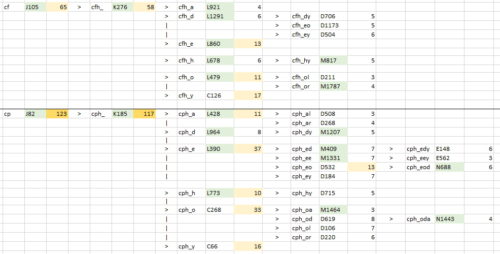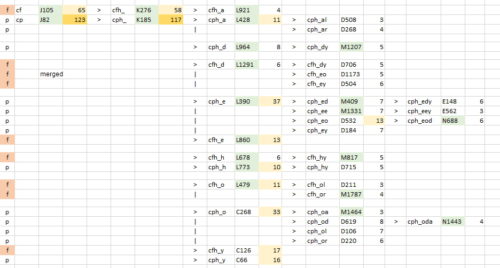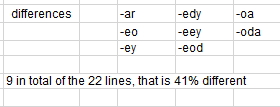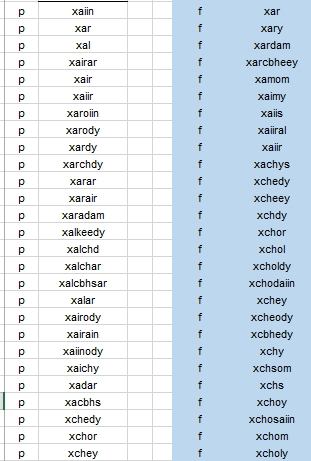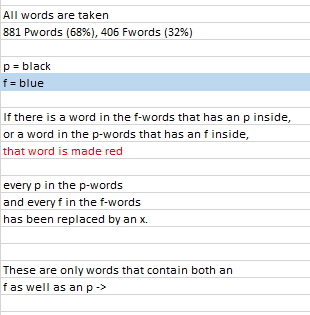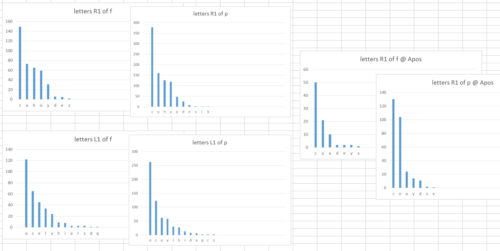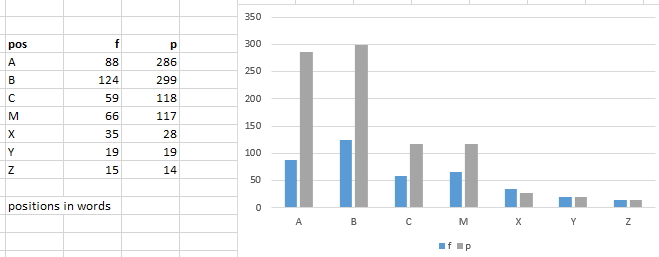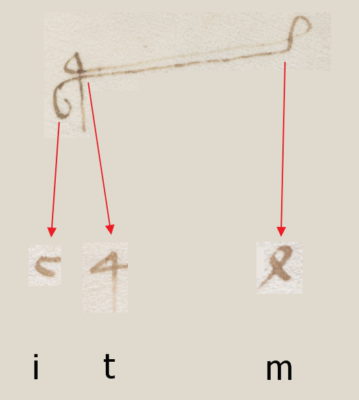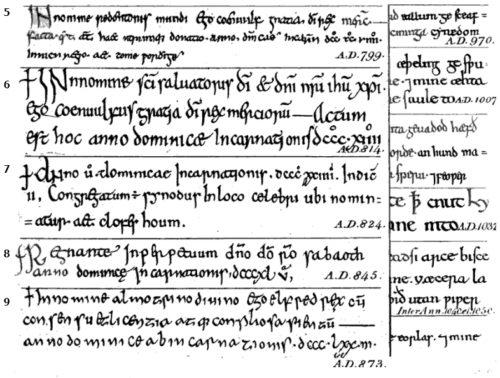f and p conclusion
It is no surprise that the Eva-characters [f] and [p]


resemble in form.
The examination of these characters reveals that they also behave the same.
- Dendrogram argument:
In this dendrogram section already the similarity showed itself.
Those results are copied:
First it is seems rather interesting to present this, the tree part of cf and cp look a-like:
Here are both merged:
There are nine differences:
If we take the (mutual ) similar word tokens (not the green ngrams) they are:
-dy -eo -ey -hy -ol -or and -a -d -e -h -o -y
Both cp and cf have 6 first tree branches: cph_-cfh_ : a d e h oy
which are exactly the same.
2. Word similarity argument
Here are some of the words with f and p :
then
The word that are red are always identical words and occur in both p as well as in the f rows. Those are now removed.
Then the lists are merged and exact the words with an exact math are 149×2 words. That is on a total of (1287-40 red words=1247) a match on 24% of the words. Almost every fourth word on the list of both f and p.
On the smallest list of f (406 words), this would mean however 37% of every f-word also exists as p-word.
Note that there are some words with double letters. For example yxchocxheosaiin and
yxchedxy. That means they are twice in the list because they have twice the letter, in this case p: ypchedy. That is true for 10 words in the p-list, and 6 times in the f-list. It does not change the percentage because those words are in both lists.
Argument 3:
The dependant letters, letters that are inside a word, on the direct right (R1), or the direct left (L1) are the same. More information here.
Perhaps not always exact to the same intensity but that is probably due to the difference in weight of the words.
On the overall right of
f: cahoydes … (sorted: cadehosy)
p: cohaydes … (sorted: cadehosy)
and on the overall left of:
f: ocelyh … (sorted echloy)
Also added are the R1 letters in the graph called R1 of f @ Apos.
If letter f is at Apos of a word, then the following Right letters are counted:
for f: coa deys
for p: coa ydse
Based on this research and the visual graphs, we can say that:
the preceding and following letters of f and p behave the same.
Argument 4: other word positions
Based on the positions you can see that f does not exist much, but it only exceeds the position of p-words once at Xpos. Since the overall count is low, conclusions solely on word position can not be made.
Since we already compare Apos, we now only need to look at Bpos and Cpos and perhaps Mpos. If the preceding L1 and following R1 letters are similar that would be no surprise.
Bpos.
Cpos.
+-+-+-+-+-+-+-+-+-+-+-+-+-+-+-+-+-+-+-+-+-+-+-+-+-+-+-+-+-+-+-+-+-+-+-+-+-+-+-+-+-+-+-+-+-+-
25-4-2017
After careful examination of the page initial P. (see page incipit etc) we see that the letter is often followed by “common” words. Also the form of the letter is such, that we can assume that it is a ligature.
It is more than probable that it stands for ITEM.
Then the decomposition could be for example:
(example P from random page 10r.)
Is it possible that there are in fact two versions of the character P. and probably F too?
The first version of the character P, is often the first letter of a word and has curl to the left.
The second version of the character P, does not have that curl on the left and is often found in the middle of a word.
+-+-+-+-+-+-+-+-+-+-+-+-+-+-+-+-+-+-+-+-+-+-+-+-+-+-+-+-+-+-+-+-+-+-+-+-+-+-+-+-+-+-+-+-
But it could also easily mean something else:
In nomeni, nomen, or Nomenclator
Have a look at these examples:
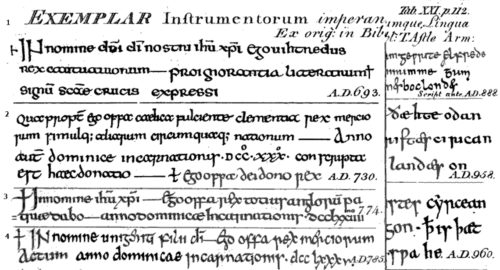
(From “The origin and progress….” p 109)
+-+-+-+-+-+-+-+-+-+-+-+-+-+-+-+-+-+-+-+-+-+-+-+-+-+-+-+-+-+-+-+-+-+-+-+-+-+-+-+-+-+-
David A. King writes “nowhere in the known medieval sources is any word equivalent to the English (word) ‘cipher’. They are simply referred to as figures or numbers, figurae, notae or numeri. (French call it chiffre, German Ziffer).
As John Davys writes, “the Key which is very properly called by the Italians la contraziffera and by the French le contrechiffre is the rule by which the correspondent reads, what is written in cypher.”
+-+-+-+-+-+-+-+-+-+-+-+-+-+-+-+-+-+-+-+-+-+-+-+-+-+-+-+-+-+-+-+-+-+-+-+-+-+-+-+-+-+-
![]()

